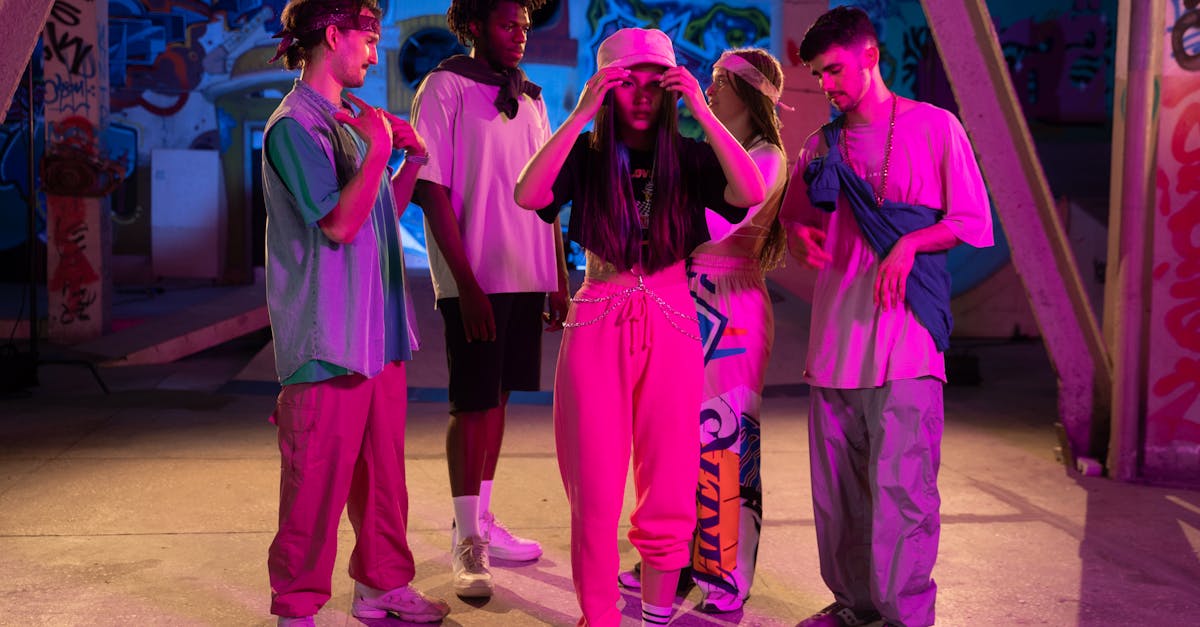Hip Hop In Motion Modern City Sounds
Introduction
Undoubtedly, the pulsating rhythm of hip hop has emerged as a defining soundtrack of modern urban culture. Born on the streets of New York in the 1970s, this powerful genre has seeped into every facet of city life worldwide. Hip hop represents more than just music; it embodies an entire cultural movement that influences dance, fashion, art, and even activism. Street corners, underground clubs, and bustling avenues echo its beats, creating a modern symphony unique to city life. However, how did a genre that started as an underground movement become a global phenomenon? And how does it continue to shape and evolve in today's ever-changing urban soundscape?
Advertisement
The Origin Story
Hip hop’s roots are firmly planted in the South Bronx, where DJs like Kool Herc began experimenting with breakbeats around the late 1970s. By extending instrumental segments, known as breaks, DJs gave dancers more time to showcase their moves. This innovation birthed breakdancing – a cornerstone of hip hop. Early pioneers rapped over these beats, narrating stories from their neighborhoods, thus giving birth to rap music. As the culture grew, graffiti expressed its artistic side, marking hip hop’s trinity: DJing, rapping, and graffiti art. The grassroots nature resonated deeply within urban communities, providing an authentic voice for marginalized communities.
Advertisement
Fashion and Identity
Hip hop's influence surpasses auditory pleasures, stretching into the realm of fashion and personal expression. The genre's raw and upfront nature typically reflects individuals with a strong sense of style and identity. From baggy jeans and tracksuits to luxurious streetwear collaborations by high-end designers, hip hop fashion is a testament to self-expression. Celebrities and artists like A$AP Rocky and Kanye West have not only set trends but have blurred the lines between streetwear and haute couture. Fashion brands quickly realized the power of hip hop, resulting in myriad collaborations that cater to ever-evolving street styles in global cityscapes.
Advertisement
Dance as Movement
Dance remains an integral stratum of hip hop culture, broadly influencing the choreography seen on the modern stage. Styles like breakdancing, pop locking, and krumping offer explosive and narrative-driven performances reflecting the vibrant undercurrents of city life. Events such as dance battles and showcases highlight talent, nurture creativity, and elevate hip hop's living legacy. Cities worldwide host competitions drawing diverse crowds, emphasizing how hip hop dance thrives in urban centers. A venue for cultural exchanges, these gatherings spotlight artists, celebrate diversity, and maintain community cohesion.
Advertisement
Economic Impact
Hip hop has demonstrated an immense capacity to drive economic growth within urban environments. Artists, producers, and entrepreneurs have leveraged the genre to create thriving businesses and opportunities, revitalizing neighborhoods and supporting creativity. Music festivals, like Rolling Loud, attract substantial tourism revenue, invigorating local businesses. The genre’s mainstream acceptance has profoundly impacted industries like fashion and film, shaping the world’s markets. By blending culture with commerce, hip hop continues to contribute significantly to city economies, reflecting its wide-reaching influence on authentic urban lifestyles.
Advertisement
Catalyst for Social Change
Through its candid lyrics and compelling narratives, hip hop addresses crucial social and political issues. Artists from Nas to Kendrick Lamar leverage their platforms to shed light on inequality, racism, and systemic injustices. Hip hop was born from resistance, and it has consistently served as a battleground for dialogues on change. Grassroots movements often draw strength from hip hop culture, which encourages listeners to question authority and advocate for progress. Recent events have demonstrated the genre's ability to rally communities for justice, fostering revolutionary change through artistic expression.
Advertisement
International Expansion
Hip hop’s magnetic sound is unmistakably influential far beyond American borders. Cities like Paris, Tokyo, and Johannesburg are brimming with local artists who embrace and revolutionize the genre. Bridged by social media, these global acts draw inspiration from their locales and experiences, infusing unique sounds and stories into traditional hip hop components. This cultural blend culminates in a dynamic cross-pollination of styles, showcasing global unity through music. International collaboration reinforces hip hop's relevance across different cultures, emphasizing its role as a catalyst for creative expression worldwide.
Advertisement
Technological Innovations
The digital landscape has reshaped hip hop, allowing artists to innovate and experiment with new sounds. Platforms like Spotify and SoundCloud offer a means for emerging artists to reach broader audiences without major label backing. Technological advancements in production equipment enable musicians to create complex beats while experimenting with genres. Live performances incorporate advanced visual effects, enhancing the sensorial experience for audiences. Embracing technology keeps hip hop fluid, adaptive, and continually exciting, making it accessible to a diverse and ever-expanding fan base.
Advertisement
Challenges of Commercialization
Despite its vast success, hip hop faces challenges as increased commercialization risks diluting its cultural essence. The mass-produced, formulaic content risks polishing away the genre’s raw authenticity. Critics argue that an oversaturated market pressures artists towards commercial viability, steering away from hip hop's core mission of storytelling and advocacy. Nonetheless, many artists strive to preserve authenticity, ensuring their work retains its powerful identity. The balancing act between commercial success and genuine expression continues to define conversations around hip hop's future in modern city life.
Advertisement
Conclusion
In conclusion, hip hop remains an indelible influence on modern urban culture, weaving together music, fashion, dance, and activism. Its roots, embedded in honest storytelling and resistance, continue to enrich city sounds around the globe. As the genre evolves, it stays fluid, embracing diversity and technological progress, shaping the world's metropolises. Despite commercialization challenges, hip hop’s unwavering authenticity and boundary-pushing innovation secure its place in both cultural and economic landscapes. As an inexhaustible source of inspiration, hip hop's dynamic beat will continue resonating through the heart of every city, narrating the compelling story of our times.
Advertisement








